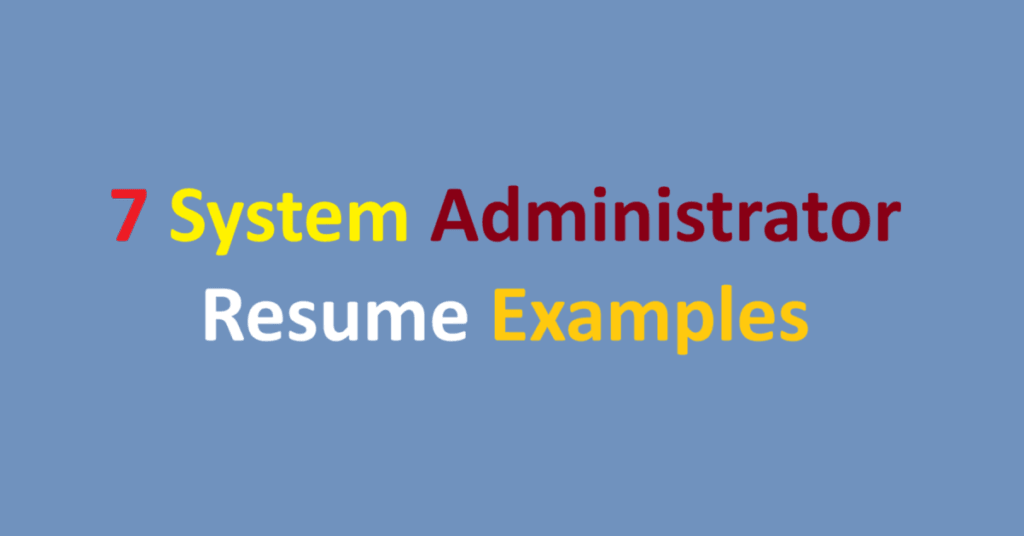Resume for Software Engineering. In the ever-evolving world of technology, a well-crafted resume is a non-negotiable asset for any aspiring software engineer. The landscape is competitive, and hiring managers are inundated with applications that often blend in a sea of similar qualifications. Your resume needs to stand out, effectively presenting your skills, experience, and accomplishments in a clear and focused manner. This blog post will delve into the essential strategies, structure, and content you should consider when crafting your resume for a software engineering position.
Resume for Software Engineering
Understanding the Purpose of a Resume
At its core, a resume serves as your personal marketing document. Its primary purpose is not to land you a job directly but rather to secure an interview. Therefore, your resume should highlight your qualifications and experience while also being tailored to the specific role you are applying for. It should create a compelling narrative of your professional journey, illustrating how your skills and experiences make you an ideal candidate for the software engineering position.
Key Components of a Software Engineer Resume
1. Contact Information
Your resume should begin with your name prominently displayed at the top, followed by your contact information. This includes:
- Phone number
- Email address
- LinkedIn profile
- GitHub or portfolio website (if applicable)
Ensure that your email address is professional – avoid using nicknames or unprofessional handles.
2. Professional Summary
The professional summary is a brief section that acts as an elevator pitch. In two to three sentences, summarize your professional background, areas of expertise, and what you can bring to the team. Make it specific to the roles you seek. For example:
“Detail-oriented software engineer with over 5 years of experience in developing scalable web applications using Java and Python. Proven track record in implementing agile methodologies to enhance project delivery efficiency. Passionate about leveraging machine learning to solve complex real-world problems.”
3. Technical Skills
This is a critical component, as it provides hiring managers with a quick overview of your technical proficiency. Categorize your skills to enhance readability. Common categories include:
- Programming Languages: Java, Python, C++, JavaScript, etc.
- Frameworks and Libraries: React, Angular, Django, Flask, etc.
- Tools and Platforms: AWS, Docker, Kubernetes, Git, etc.
- Operating Systems: Linux, Windows, macOS
- Databases: MySQL, MongoDB, PostgreSQL
Ensure that you include only the languages and tools you are genuinely proficient in.
4. Work Experience
This section is the backbone of your resume and should take up the most space. List your work experience in reverse chronological order, starting with your most recent position. For each role, include:
- Job Title
- Company Name (and location)
- Dates of Employment
Describing Your Responsibilities and Achievements
In bullet points, describe your key responsibilities and accomplishments. Start each bullet with action verbs and quantify your achievements where possible. For example:
- Developed and maintained a microservices architecture for a fintech application, resulting in a 30% reduction in load times.
- Collaborated with a cross-functional team of 10+ developers in an Agile environment to deliver software solutions to over 100,000 users.
- Implemented automated testing which improved deployment efficiency by 40%.
5. Education
Your educational background should include your degree(s), majors, institutions attended, and graduation dates. If you have recently graduated, it is common to place this section above your work experience. Example format:
- Bachelor of Science in Computer Science
- University of Technology, City, State – May 2022
If applicable, list any relevant coursework, honors, or certifications, especially those that pertain directly to software engineering.
6. Projects
For software engineers, showcasing projects can significantly bolster your resume. Include personal, academic, or freelance projects that demonstrate your ability to solve problems and apply your skills. Provide a brief description of each project, including the technologies used and your specific contributions.
Example:
- E-Commerce Web Application
Developed a fully functional e-commerce platform using React and Node.js, implementing payment integration with Stripe. The platform achieved over 500 user sign-ups in its first month.
7. Certifications and Professional Development
If you have obtained any relevant certifications, such as AWS Certified Developer, Google Professional Cloud Architect, or Certified ScrumMaster, list them in this section. Additionally, participating in coding boot camps, workshops, or webinars can also be highlighted here.
8. Additional Sections
Depending on your experience and background, you may choose to include additional sections, such as:
- Contributions to Open Source Projects: If you have contributed to significant projects on platforms like GitHub, mention this to reflect your collaboration and coding expertise.
- Volunteering Experience: Collaborating on development projects for non-profits can showcase not just technical skills, but also your commitment to community.
- Languages: If you’re multilingual, indicate your language capabilities, especially if relevant to the job.
Tailoring Your Resume
One of the key strategies for crafting an effective resume is customization. Every job posting is unique, and so should be your resume. Tailor your professional summary, skills, and work experience sections to reflect the requirements and responsibilities outlined in the job description. Using relevant keywords from the posting will enhance your chances of passing through Applicant Tracking Systems (ATS).
Formatting and Design
While content is king, presentation matters too. Ensure your resume is clean, professional, and easy to read. Use a standard font (like Arial or Calibri) and keep the font size between 10 and 12 points. Adequate white space, consistent formatting, and bullet points will enhance readability. Limit your resume to one or two pages, making sure every word counts.
Common Mistakes to Avoid
- Overloading with Jargon: While industry-relevant terminology is important, avoid jargon overload that might confuse hiring managers.
- Unmeasurable Achievements: Always try to quantify your results when possible.
- Using a One-Size-Fits-All Approach: Tailor your resume for each application rather than sending the same one.
- Neglecting to Proofread: Spelling and grammatical errors can create a negative first impression. Take the time to proofread or have someone else review your resume.
FAQs Based on Resumes for Software Engineering Roles
In today’s highly competitive job market, particularly in the technology sector, a well-crafted resume is crucial for software engineers looking to make an impression on potential employers. When creating or refining a resume, candidates often have several questions. This blog post aims to answer the most frequently asked questions about resumes tailored for software engineering positions, providing you with insights that can significantly enhance your application’s effectiveness.
1. What Should a Software Engineer Resume Include?
A strong resume for a software engineer typically encompasses the following key components:
- Contact Information: Clearly state your name, phone number, email address, and LinkedIn profile. It’s also advisable to include a link to an online portfolio or GitHub repository that showcases your projects.
- Summary or Objective Statement: A brief, concise statement that summarizes your professional background, core competencies, and career goals. Tailor this section to reflect the specific role you are applying for, emphasizing relevant skills and experiences.
- Technical Skills: List relevant programming languages, frameworks, tools, and technologies. Organizing this section can enhance readability; consider grouping them by category (e.g., languages, frameworks, databases).
- Professional Experience: Detail your work history, starting with your most recent position. Include job titles, company names, locations, and dates of employment. For each role, provide bullet points outlining your responsibilities and achievements, focusing on quantifiable outcomes where possible.
- Education: Include your degree(s), major(s), and the institutions you attended, along with graduation dates. If you’ve taken relevant courses or completed certifications, feel free to add them.
- Projects: Highlight any significant projects, either personal or professional. Include a brief description, your role in the project, and the technologies used. This section is particularly important for candidates with less professional experience.
- Certifications: List any relevant certifications, such as AWS Certified Developer, Certified ScrumMaster, or others that demonstrate your expertise.
- Additional Sections: Depending on your background, you may choose to include sections for awards, publications, professional affiliations, or volunteer experience.
2. How Long Should a Software Engineer Resume Be?
The ideal length of a resume can vary based on your level of experience. For most software engineers, a one-page resume is sufficient, especially for those early in their careers. However, if you have extensive experience (more than ten years), two pages may be more appropriate. The key is to be concise while ensuring that all relevant information is presented clearly and effectively.
3. Should I Tailor My Resume for Each Job Application?
Absolutely. Tailoring your resume for each job application is a best practice. It allows you to align your skills and experiences with the specific requirements of the role. Focus on keywords mentioned in the job description, and ensure that your most relevant experiences are highlighted prominently. This not only increases your chances of getting noticed by applicant tracking systems (ATS) but also demonstrates to recruiters that you are genuinely interested in the position.
4. How Can I Make My Resume Stand Out?
There are several strategies to consider when aiming to create a standout resume:
- Use Action Verbs: Start each bullet point in your experience section with strong action verbs like “developed,” “designed,” “implemented,” and “optimized” to convey your contributions effectively.
- Quantify Achievements: Whenever possible, back your claims with concrete data. For example, instead of saying, “Improved application performance,” say, “Improved application performance resulting in a 30% reduction in load times.”
- Highlight Soft Skills: While technical skills are crucial, soft skills such as teamwork, communication, and problem-solving are equally important in a collaborative environment. Mention instances where you utilized these skills effectively.
- Optimize for Readability: Ensure your resume is easy to read with clear headings, consistent formatting, and bullet points. Keep font sizes and styles consistent and ensure there is ample white space throughout.
- Use a Professional Design: While content is key, a visually appealing layout can catch a recruiter’s eye. Consider utilizing templates or tools that offer professional designs appropriate for a tech resume.
5. What Common Mistakes Should I Avoid?
When crafting your software engineer resume, be mindful of these common pitfalls:
- Spelling and Grammar Errors: Typos can create a negative impression. Always proofread your resume and consider having someone else review it.
- Overloading with Jargon: While technical jargon is sometimes necessary, ensure it is accessible. Your resume may be reviewed by HR personnel who may not be well-versed in technical terms.
- Being Too Vague: Clearly articulate your responsibilities and achievements rather than relying solely on general statements. Be specific about your contributions.
- Including Irrelevant Information: Tailor your resume for the position at hand. Leave out unrelated work experience unless it highlights transferable skills.
6. Should I Include Non-Technical Experience?
In many cases, non-technical experience can add value to your resume, especially if it showcases transferable skills such as project management, teamwork, or leadership. However, ensure that it remains relevant to the job you are applying for. If a previous job does not contribute to your candidacy or align with the role, consider omitting it or summarizing it briefly.
7. How Important Are References on a Resume?
Typically, references should not be included directly on your resume. Instead, it is common practice to state, “References available upon request.” Prepare a separate document for references and provide it when asked. Ensure that your references are informed in advance and can speak positively about your skills and experiences.
Conclusion
Crafting a compelling software engineering resume requires careful thought, attention to detail, and an understanding of what hiring managers are seeking. By presenting your qualifications in a structured, clear, and tailored format, you are not just listing your experiences but telling a story of your career. Tailor your resume for each application, keep it concise yet informative, and always strive for excellence in every project you undertake. With these strategies in mind, you’re well on your way to landing that coveted interview and ultimately, your dream job in software engineering.


